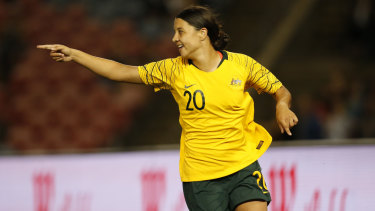
However, any negative balance rolls over into the next month - meaning if you failed to sell anything, you would have to make twice your monthly wage in commissions the following month to earn any extra money.
Among real estate agents, the mean income of $82,045 is 50 per cent higher than the median income of $54,539. This suggests that the average is being elevated by those earning very large sums.
It is one profession with a ''rock-star pay gap'' - where the mean and median incomes differ greatly. It also features heavily among barristers, futures traders, athletes, authors, actors, wholesalers, entertainers, models and singers.
Some agents get paid purely on commission, but Sammut says this practice is becoming less common.
"It’s basically dead in the industry these days because people would prefer to have a level of security."
Find out the pay gap for your job by typing it into the interactive below.
Real estate agents also have among the biggest gaps in full-time median income across gender lines. Men in this profession have a median yearly personal income of $76,804, 35 per cent higher than women.
Other jobs with large gaps between average male and female incomes include corporate services managers, painters and sculptors, vets and project administrators.
Sammut says the recent downturn in the property market saw plenty of agents leave the industry.
"That’s the whole reason we’re employed - to sell properties. If we’re not selling, why would they employ us?''
He says the competitive nature of the job was one of the main reasons it appealed to him in the first place, adding that the world of real estate was a "bit of an anomaly" due to how much of the earning potential was based on performance.
"You’re only really capped by how much you’re willing to put into it. Before I had kids I’d sink everything into work - but I still work 10 hours every day and take after hour appointments when I need to."
'A fiction we were sold last century'
Pay disparity for male and female footballers stretches across the world, says former FIFA executive committee member and Matildas player Moya Dodd.
"I think the pay gap in sport is very large because the top of elite male sport is very well remunerated - it’s not just in football, it’s in most sports where there is a high level elite professional game," Dodd said.

Household name: Matildas star Sam Kerr.Credit:AAP
"It’s a far deeper and more systemic issue that cuts across virtually every participant in the sports industry."
While Dodd says she ''wouldn't rule out'' the possibility of the Matildas and Socceroos eventually being paid the same for their international team duties, the differences are clear.
Top Matildas players, such as Sam Kerr, who at 25 will play her third world cup this year, earn an annual salary of $41,000 to play for their country and the second tier receive $30,000 per year, plus match fees.
Socceroos players are paid by appearance, earning $7000 per match, as well as 30 per cent of all tournament fees - which can be in the millions in a World Cup year split across the squad.
W-League contracts sit at roughly $15,000 for top players. Most supplement this income further by playing overseas domestic leagues in the Australian offseason.
Analysis of census data provided by the Australian Bureau of Statistics shows sportspeople have the among highest income disparity across gender lines in Australia.
The median income for full-time sportsmen is $67,652, but the median for full-time sportswomen is $42,900 (58 per cent less). Keep in mind this includes cricketers, footballers, racing car drivers, jockeys, golfers, gymnasts, athletes, surfers, tennis players and squash players - all of which have vastly different average earnings.
Dodd believes the future of female club football will be key to earnings, rather than appearances for national teams.
"I happen to think the next big growth opportunity is in club football - which will hopefully provide the bread and butter income to hundreds or thousands of players around the world.
"This idea that the public isn’t interesting in watching women play football, or playing high level sport, is not the natural order of things. It’s a fiction we’ve been sold in the last century or so because women’s sport was systemically suffocated."
But how do things change? Dodd has a few ideas.
"I think it starts with a good hard look in the mirror by everyone that’s involved in the sport. It starts with grass roots clubs, the clubs along the development pathway, right up to the professional clubs in Australia. It also extends to the media, to sponsors, to fans and to everyone who’s part of the system where women do most of the unpaid work.
"That under-remuneration is something we can all challenge."
Sports also have a large gap in the mean and median income due to elite players earning far higher amounts than the rest of the profession, thereby driving up the mean but leaving the median relatively unchanged.
For professional footballers (which includes Australian Rules and soccer players), tax office data shows the median annual income is $68,018, while the mean is 77 per cent higher at $120,424.
Find out the median income for your job using the interactive below.
Matt Bungard is a journalist at The Sydney Morning Herald.
Craig Butt joined The Age in 2011 and specialises in data-driven journalism. In addition, he helms the popular Melbourne Express blog on Thursdays and Fridays.









 Add Category
Add Category